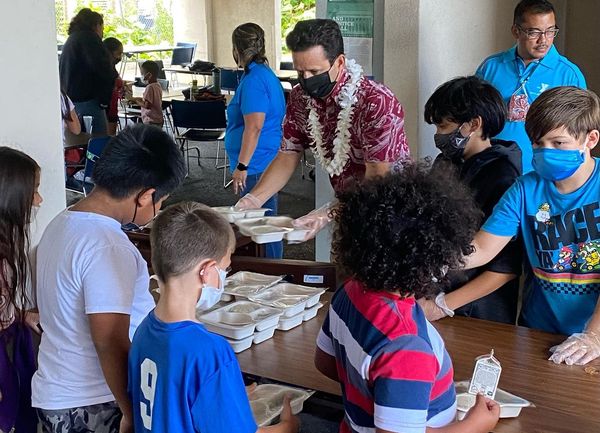USDA to increase federal child nutrition program reimbursement by 13% in Hawaiʻi

Beginning this summer, the US Department of Agriculture will increase Hawai‘i’s reimbursement rate for federal child nutrition programs by an additional 13 percent.
The new rate will apply to all child meal programs in the state, including the National School Lunch Program, the School Breakfast Program, the Child and Adult Care Food Program, and the Summer Food Service Program.
The rate increase is expected to bring in an additional estimated $8 million a year to Hawai‘i.
The adjustment follows efforts led by US Sen. Brian Schatz (D-HI) to boost the federal reimbursement rate to accurately reflect the current cost of providing school meals in Hawai‘i and the territories.
In May 2022, Schatz led Hawai‘iʻs congressional delegation in a letter urging the USDA to make a temporary adjustment as it completes its years-long study to update its severely outdated cost estimates. And in December, Schatz successfully passed a provision in the government funding law that directed the agency to make the increase.
“This increase is a big win for kids across Hawai‘i and for our state,” Schatz said. “The school meals program feeds around 100,000 students every week, and we deserve our fair share of federal funding to support it.
“I thank the USDA for working with us to boost Hawai‘i’s funding so that students who rely on the program can continue to get the healthy meals they need to succeed in school.”
USDA Food and Nutrition Service Administrator Cindy Long said in a statement that the agency is “pleased” to make these interim rate adjustments for Hawaiʻi and the territories. The agency also will collect more local cost data before setting future reimbursement rates.
The increased reimbursement rate — 30 percent above the continental United States — will be effective beginning July 1, 2023.
The USDA also announced it would also increase child nutrition program reimbursement rates for Guam, Puerto Rico and the US Virgin Islands — an increase that totals more than $30 million a year for all four jurisdictions.









